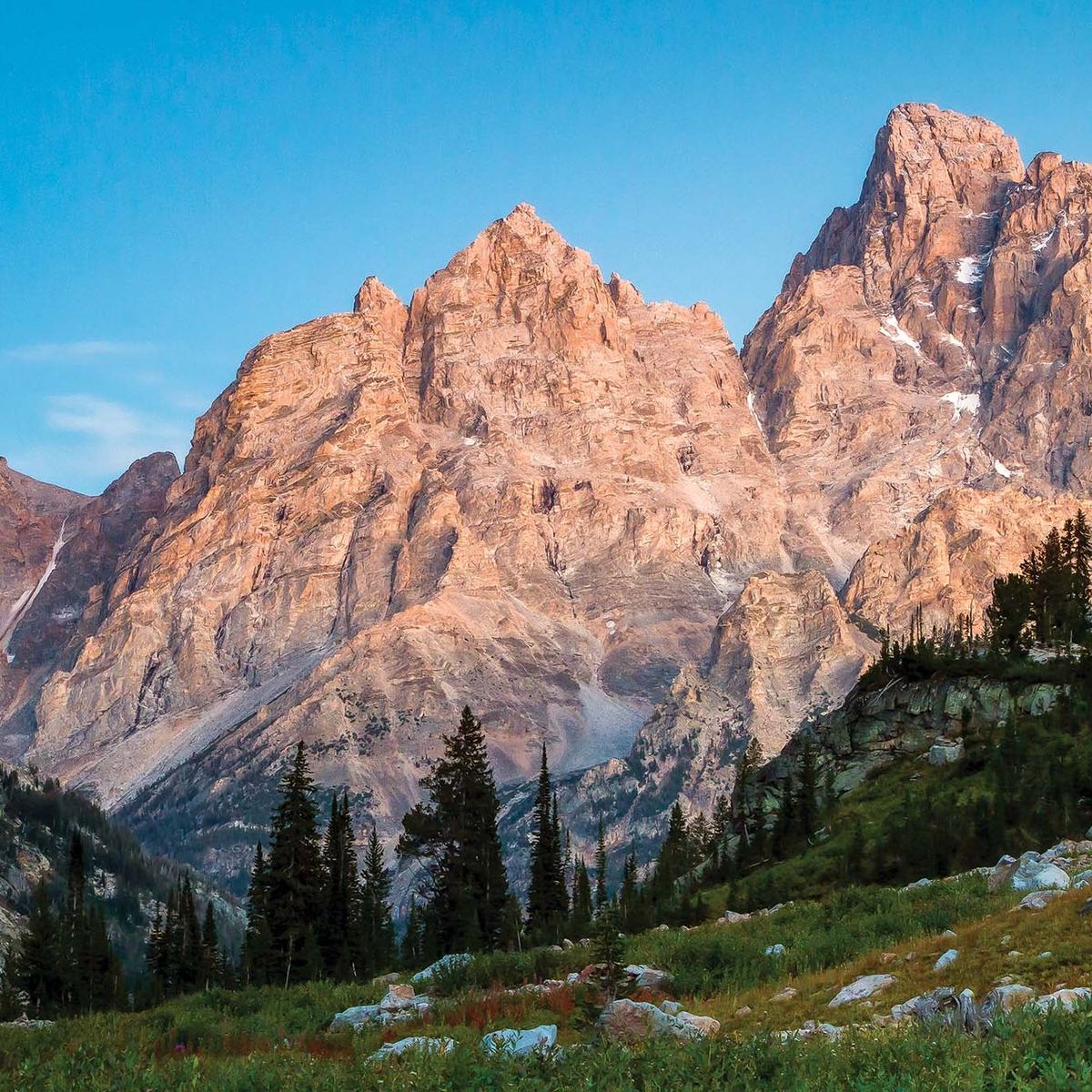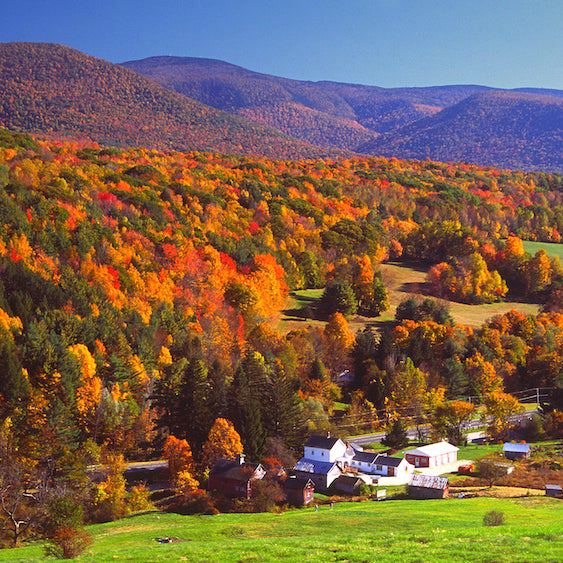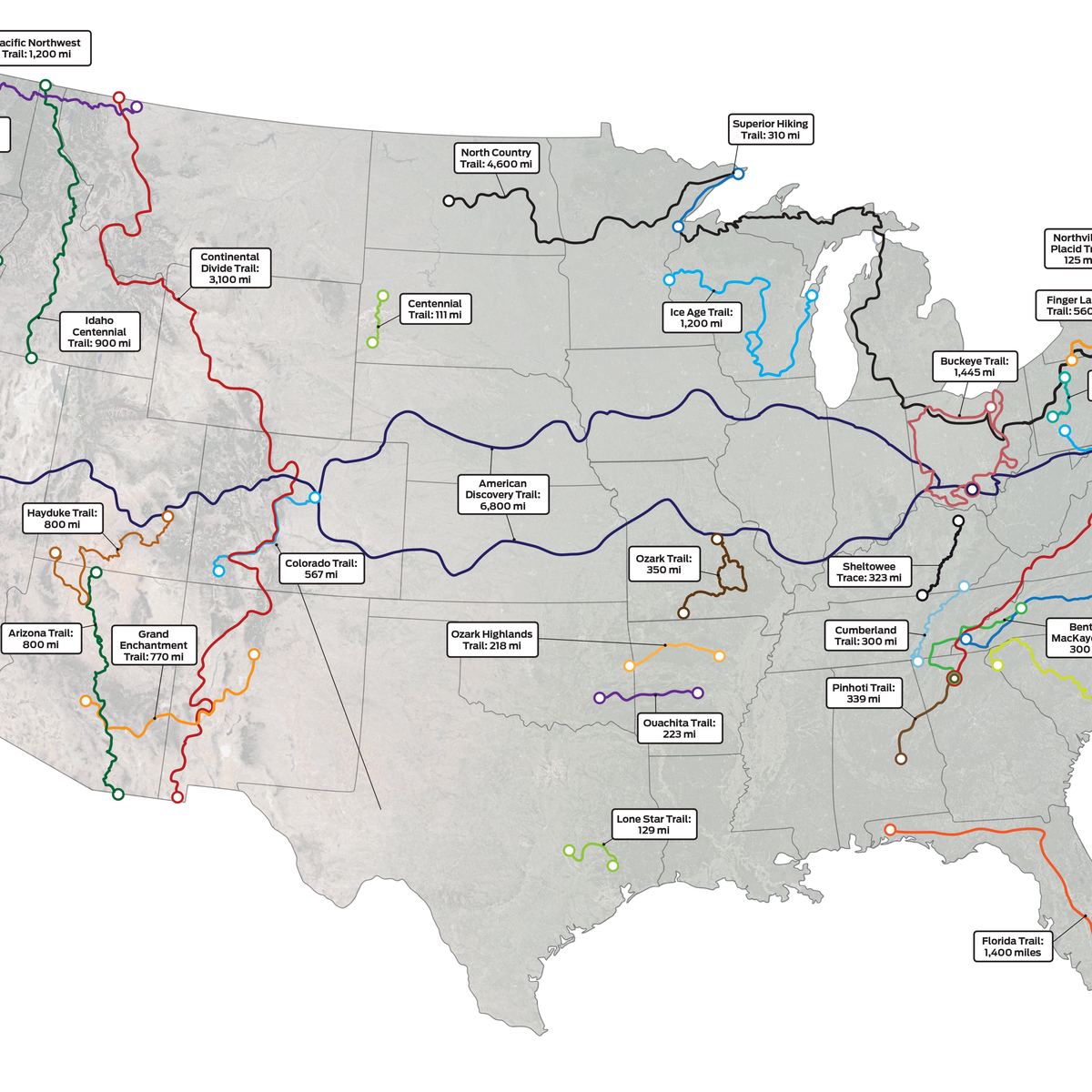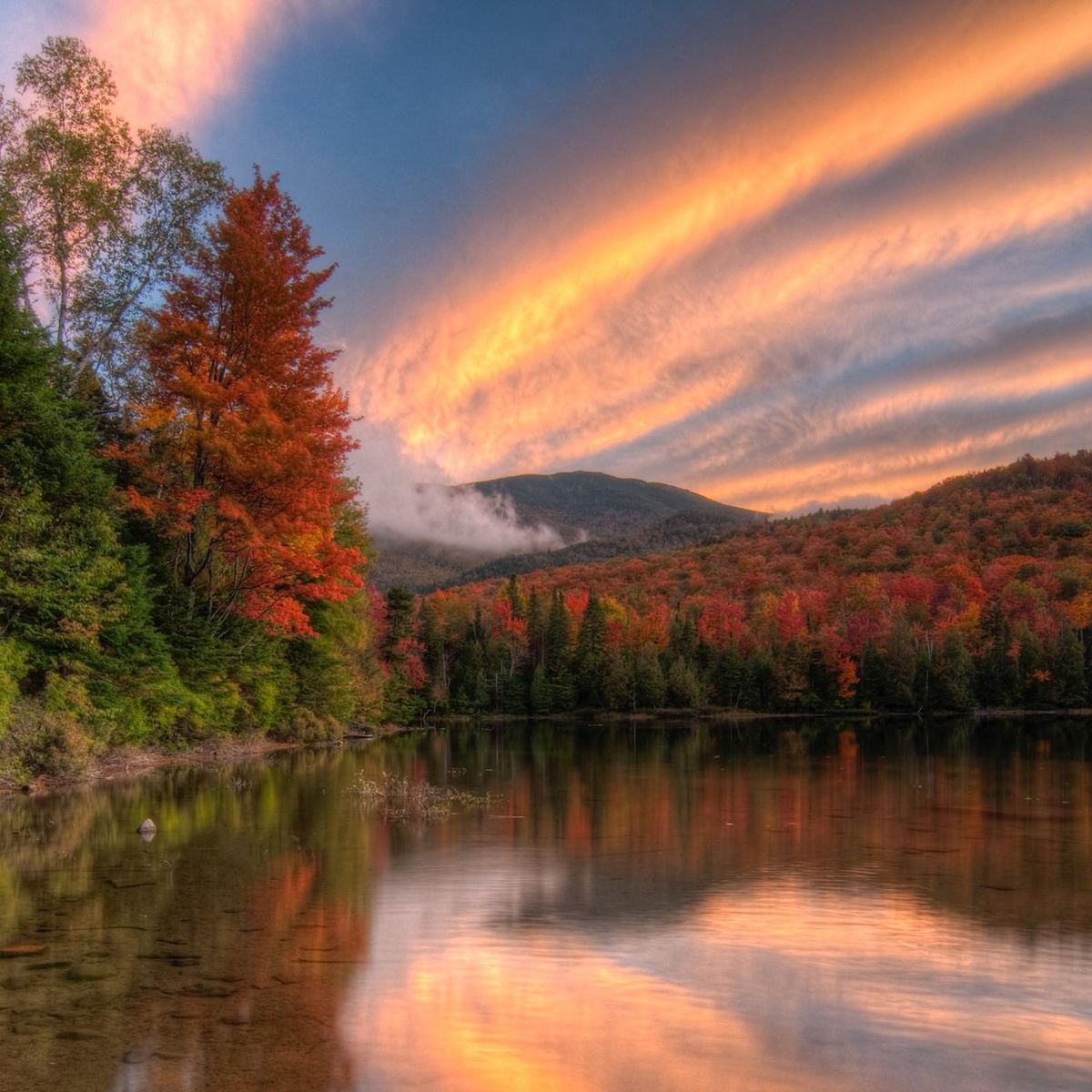The Best Hikes in the Midwest
The Best Hikes in the Midwest
The midwestern states are some of the most geographically diverse landscapes in America. Shaped by ancient glaciers, rivers and lakes are abundant among deep forests and rolling hills. Here are some of the best hikes to explore this diverse region.
Heading out the door? Read this article on the new Outside+ app available now on iOS devices for members! Download the app.
America’s heartland is home to some of the country’s best hiking, backpacking, and camping. Diverse geology, vast lakes, and deep river networks form a landscape primed for exploration. Here are some of the very best destinations for hiking in the Midwest.
Devil’s Lake State Park
Baraboo, Wisconsin
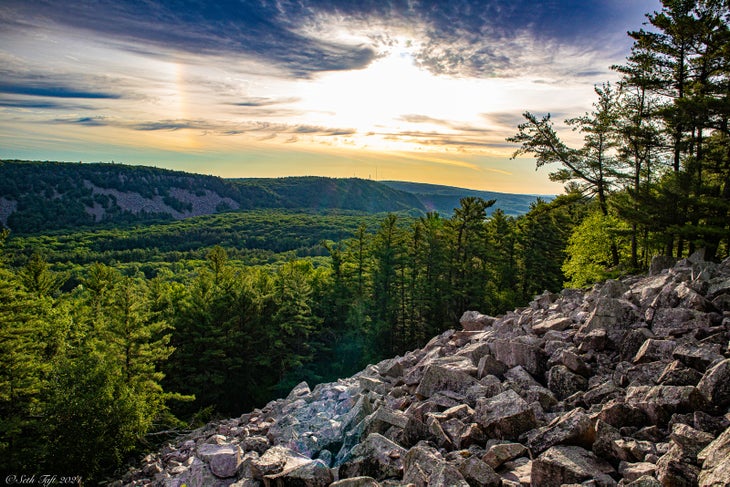
To be honest, have you ever scrambled around a 500-ft bluff of 1.6 billion-year-old quartzite boulders? Located thirty-five miles north of Madison, WI, Devil’s Lake State Park rests at the terminus of the last ice age. The 360-acre lake is surrounded on three sides by steep bluffs constructed from these pick-up truck-sized boulders.
In the 1930s, craftsmen with the Civilian Conservation Corps carved trails through the massive rock pile and surrounding forests.
Pick from twenty-nine trails, many of them relatively short, that end with spectacular rock formations and vistas. The trails live up to their monikers with names like Devil’s Doorway, Balanced Rock, Elephant Rock, and Tumbled Rocks.
In one corner of the park, ancient glaciers carved out Parfrey’s Glen, a trail through a heavily shaded environment that is often 10 degrees cooler than the rest of the park. Rare plants, waist-high ferns, and one-of-a-kind rock formations make the Glen a special place to visit.
After a day of exploring, take a dip in the crystal clear, cool waters of the lake. Geologists say ancient glaciers deposited the sand at the bottom of the lake.
Devil’s Lake State Park is located on the Ice Age National Scenic Trail, which is a great way to extend your adventure.
Kekekabic Trail
Northern Minnesota
As its name implies, the Boundary Waters Canoe Area is an iconic paddler destination. If you want to truly test your wilderness skills, consider trading in your Duluth pack for a backpack and compass. The Kekekabic Trail is a 40-mile (mileage may vary depending on trailhead options) point-to-point rugged and remote trail.
Originally built in the 1930s to provide access to deep woods firepower, the trail reverted to a wild state over time. Challenging for experienced hikers, the route has been altered by several forest fires and is still recovering from a 1999 “once-in-a-century” windstorm that blew down thousands of trees along the route.
Adopted by an all-volunteer Kekekabic Trail Club, the Kek is minimally maintained. Expect to encounter thick, tangled blowdowns that might require a belly crawl to get through, waist-high grasses that obscure the path, and beaver dams that lead to confusing detours. Do you really want to walk over logs at the top of a beaver dam? It’s a wild experience.
Decades-old blue plastic trail markers provide random trail clues that can be found by the most attentive hikers. Plan for a 3-4 day adventure. The rewards include pristine, remote backcountry lakes, rocky ridges with breathtaking vistas, and crossing a hand-built bridge over a fast-moving waterfall.
Hikers who finish the “Kek” will definitely have campfire stories to share. Look for the Kekekabic Trail guide published by the Kekekabic Trail Club and the North Country National Trail Association.
Apostle Islands
Bayfield, Wisconsin
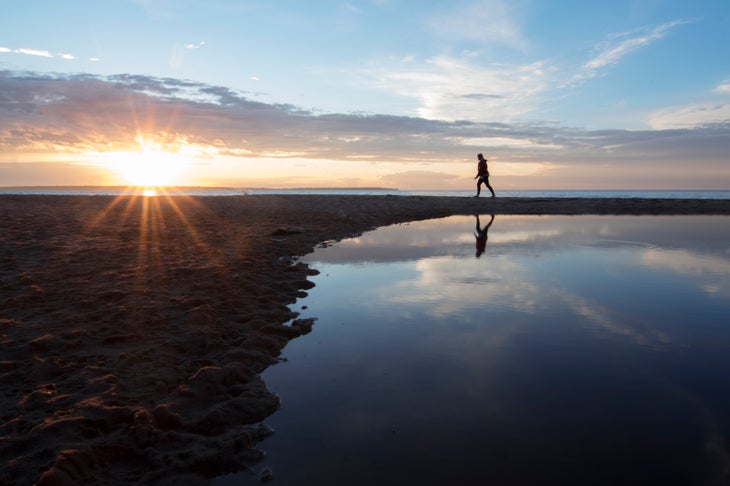
A trip to northern Wisconsin leads to exploring exotic island environments and hiking trails high above Lake Superior’s wave-swept beaches. The National Lakeshore comprises 21 islands and a 12-mile segment of Wisconsin’s Lake Superior shoreline. Ferries deliver hikers to islands that offer 50 miles of trails to explore. Experienced paddlers can rent sea kayaks for the short paddle to the islands. Although some of the islands are small, the scenery delivers a constant stream of “hey, look over here” invitations. The islands rest on ancient Precambrian sandstone. Lake Superior’s waters have carved-out sea caves, sand spits, and rock-strewn beaches. When the waves are high, the waters splashing through the sea caves create a musical accompaniment to your adventure.
Away from the lakeside cliffs, the trails move through abandoned quarries, farmsteads, and logging sites. No sign of Paul Bunyan remains.
Check out Stockton Island, Raspberry Island, and Lighthouse Bay on Sand Island. If the winds are high and the ferries are delayed, the 6-mile Lakeshore Trail crosses between inland forests and sandstone cliffs overlooking the largest of the Great Lakes.
Hike for a day, weekend, week, or month. Pick One.
Midwestern hikers have thousands of miles of trails to explore. Wide, flat wood-chipped loops in urban parks and nature centers to remote backcountry routes like the Superior Hiking Trail, Ice Age Trail, Border Route, and North Country National Scenic Trail that boast epic adventures that best the more well-known Appalachian Trail and Pacific Coast Trail for badassery.
Border Route
Northern Minnesota
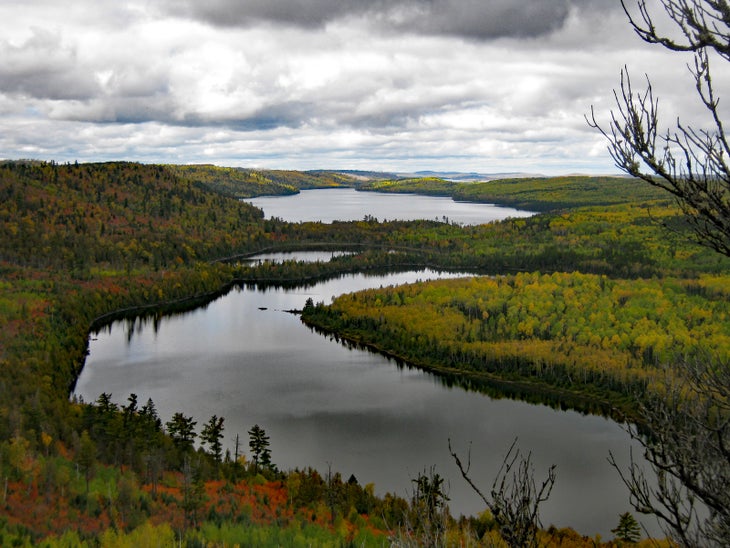
Following the international boundary between the United States and Canada, the 65-mile Border Route connects with the Kekekabic Trail on the west and the Superior Hiking Trail on the east.
The trail is wild and remote, and it is best approached with experience and a healthy respect for Mother Nature. Multiple-day trips require permits awarded by wary rangers who will inspect your gear to ensure proper equipment.
Hikers can select reasonable distance out and back trails like 8-mile Caribou Rock to Stairway Falls or choose the 7.7-mile Rose Cliffs loop for day hikes. Those who plan to push through from start to finish will encounter steep climbs and descents, fast-moving streams requiring carefully planned crossings, terrain shifts from deep forest to thick grass meadows, rocky ridges, and wetlands that suck your boots deep into the mud. When the change in elevations requires a water break, swarms of blackflies and mosquitoes will motivate you to keep moving on to the next campsite. The Border Route requires true experience in map, compass, and when necessary, bushwhacking skills.
Don’t let the banter dissuade you. Hard hiking sections reward you with incredible vistas from the top of ancient ridges, revealing miles of secluded forests and a network of lakes scraped out of the rocky Canadian Shield by ancient glaciers.
In 2019, Congress designated the Border Route as part of the North Country National Scenic Trail, which was planned, built, and managed by volunteers. More about that next.
Nerstand Big Woods State Park
Nerstand, Minnesota
Most hikes start with a purpose, such as scaling a summit, exploring an unfamiliar environment, or setting a new FTK record. A relatively new pursuit called forest bathing asks hikers to slow down, look around, and contemplate the serenity of nature. The Midwest has dozens of hiking trails that fit all of those descriptions.
An hour south of the Twin Cities, Nerstrand Big Woods State Park offers the perfect landscape for quiet contemplation. Eleven miles of trails meander through wildflower meadows and 100-year-old stands of basswood, oak, hickory, aspen, ash, and sugar maple trees.
More than 200 species of wildflowers are found within the park’s borders. One, the rare, delicate, and endangered Minnesota Dwarf Trout Lily can’t be found anywhere else in the United States. The white petals have hints of pink and purple on the underside.
Halfway through the Hidden Falls Trail, water streams over a 20-ft tall limestone waterfall until a placid pool below. There’s plenty of room to sit beside the cascading waters or wade in the ankle-deep pool under the falls and celebrate nature.
North Country National Scenic Trail
Trails in Eight States
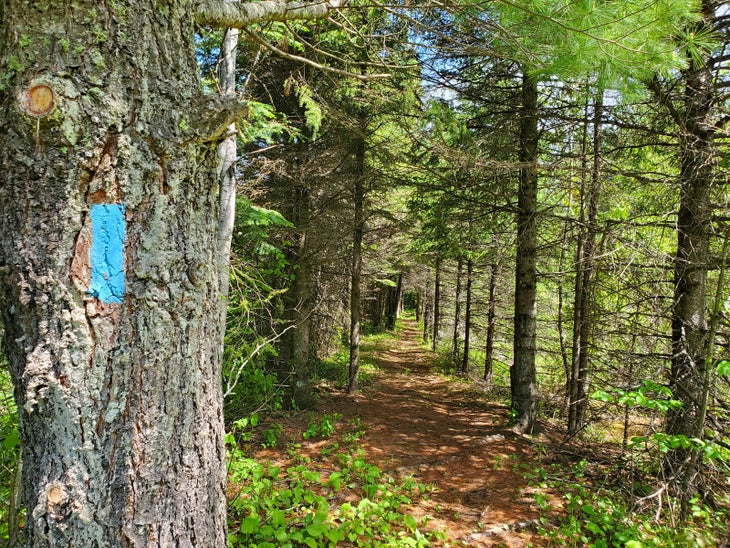
The Appalachian Trail and Pacific Coast Trail capture all the headlines, profiling the life-changing adventures of long-distance hikers. Dominating media coverage, those trails are often crowded in peak seasons.
Midwesterners prefer an option that’s, pardon the pun, “off the beaten path,” The North Country National Scenic Trail meanders for 4,800 miles across eight states: North Dakota, Minnesota, Wisconsin, Michigan, Ohio, Pennsylvania, New York, and Vermont. The trail is as long as the combined length of the Appalachian Trail and Pacific Coast Trail.
Water is ever-present in the form of rivers, streams, waterfalls and shorelines and three Great Lakes.
Detailed maps assist trip planning and volunteers paint blue blazes painted on trees to help you navigate. There are dozens of well-reviewed guidebooks, blogs and social media forums that break down the trail into manageable sections for a weekend, week or month. Mile by mile, the landscape delivers an incredible variety of environments. Remote forests shift to prairies, farmlands, and trail towns happy to serve you a delicious meal, warm bed, and hot shower.
Picking a trail segment can be daunting at almost 5,000 miles. In Wisconsin, 60 miles of the trail cross the Chippewa National Forest.
For bragging rights, hikers who cover this section will encounter more lakes and wetlands than any other National Forest in the United States.
In Upper Michigan, the 43-mile portion of the trail follows the Pictured Rocks National Lakeshore. Hikers move back and forth between 15 miles of Lake Michigan cliffside trails to deep woods and hidden trout streams.
The trail is built and maintained by more than two dozen volunteer NCTA chapters and managed by the United States Forest Service. The North Country National Scenic Trail Association hosts a “Hike 100’ Challenge. Cover 100 miles in a calendar year and receive a badass embroidered patch. That’s certain to start a conversation with your outdoor friends.
Ice Age Trail
Wisconsin

The Ice Age Trail covers 1,000 miles and is managed by the National Park Service, the Wisconsin Department of Natural Resources, and the volunteer Ice Age Trail Alliance.
Twelve thousand years ago, glaciers carved the landscape, creating depressions for lakes and river channels, pushing millions of tons of earth into recognizable features called moraines. Evidence of the ancient glaciers remains today where the Ice Age Trail enters Devil’s Lake State Park.
One of 11 National Scenic Trails, the Ice Age Trail crosses a mix of private lands, city parks, state parks and a national forest. Nineteen Ice Age Trail Alliance volunteer chapters offer local resources and support. Most helpful is a volunteer-operated shuttle service that removes the hassle and inconvenience of returning to a starting point at the end of a weekend.
Each year, the list of hikers who completed the full 1,000-mile trail is added to a master list. By early 2024, 518 hikers had claimed that distinction.
Most hikers select from more than 100 defined segments for a long weekend adventure. The segments range from short 1-2 mile easy jaunts to more challenging 8-10 mile hikes. Every segment celebrates the local flora, fauna, geology and history. Trail segment number 18, in the middle of the state, is a 1.8-mile trail that celebrates the childhood home of John Muir, “called the Father of the National Parks.”
The St.Croix Falls segment on the western terminus, just an hour north of the Twin Cities, offers a 9-mile trail filled with unique geologic landmarks.
Palisades Head
Silver Bay, Minnesota

The North Shore of Minnesota is a hiker’s paradise. Eight state parks with hundreds of miles of rugged trails attract hikers from across the Midwest. The challenging 310-mile Superior Hiking Trail rewards hikers with magnificent views of Lake Superior.
Technically not a true hike, unless you count the short .09-mile walk from the small parking lot, Palisades Head is a must-see destination for any outdoor enthusiast exploring northern Minnesota or Wisconsin.
Located near Tettegouche State Park (don’t worry, look up the pronunciation), Palisades Head is a massive 1.1 billion-year-old rock formation rising 335 feet above Lake Superior.
Odd in this era of safety oversight, the cliff’s edge is unprotected. No fences, no barriers, no walls. Be careful! It’s a sheer drop to the rocky beach below.
The top of the cliff is bare rock. Most visitors find a spot away from other people, sit on the sun-warmed rock, and contemplate the breathtaking views of Lake Superior and the cliffs dominating the shorelines left and right of Palisades Head. Falcons, hawks, and eagles circle above. In certain weather conditions, the brilliant blues of the sunlight sky and Lake Superior’s still waters blend together at the horizon to create a mystical blue bowl without edges. It’s an incredible experience.
Palisades Head attracts rock climbers who test themselves on the sheer cliffs’ 5.8-5.12 routes. The happy shouts of climbers cresting the cliff edge bring visitors back to the reality of a long drive home.



